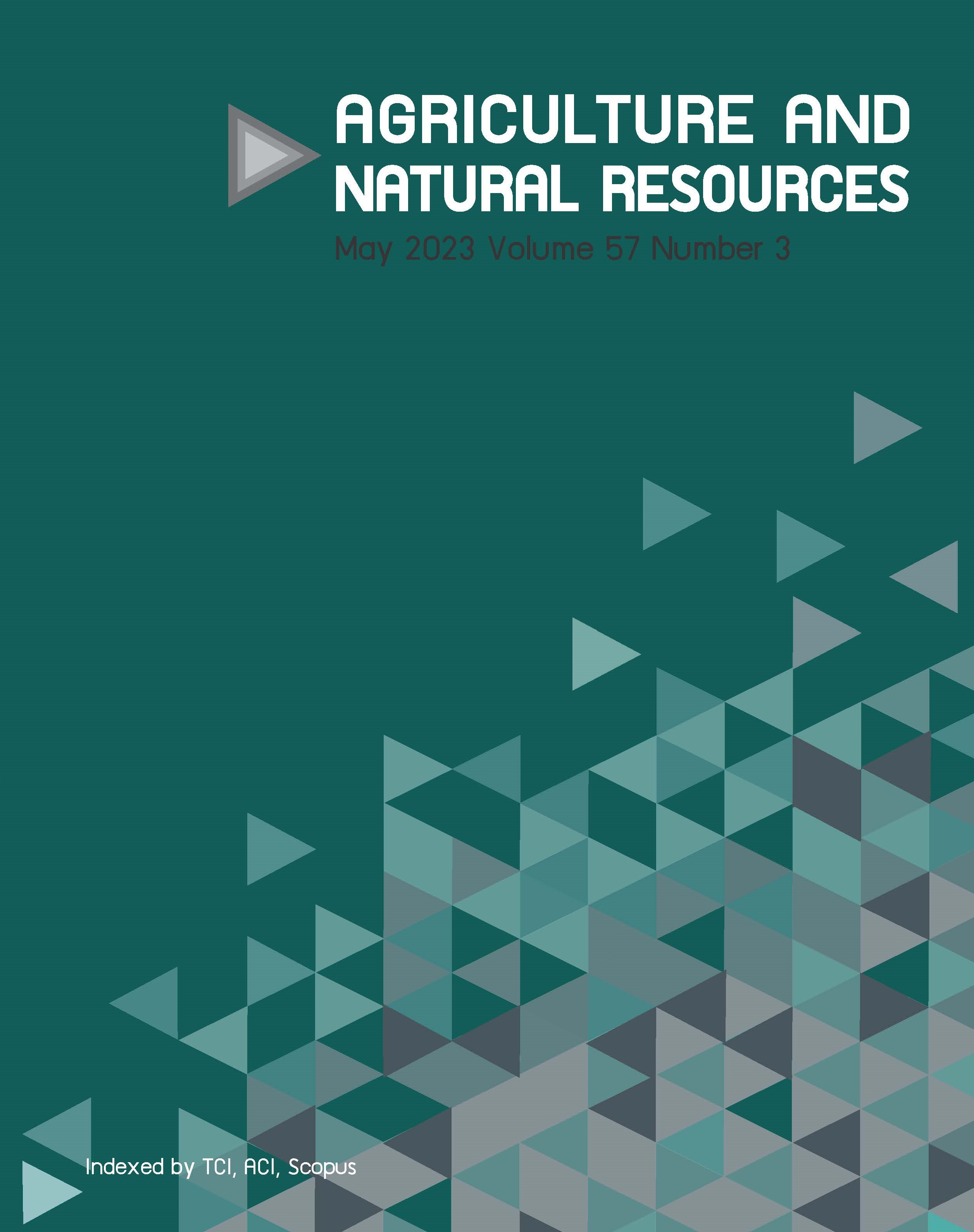Screening of waterlogging-tolerant maize (Zea mays Linn.) at early seedling stage
Keywords:
Climate change, Excess soil moisture stress, Screening, Waterlogging stress, Waterlogging toleranceAbstract
Importance of the work: Water is a crucial factor for maize growth and development; however, excessive water in the root system can have negative effects.
Objectives: 1) To investigate the impact of waterlogging on various maize lines; 2) to identify the duration of waterlogging adversely affecting maize growth; 3) to identify tolerant and susceptible varieties; and 4) to determine waterlogging tolerance traits during vegetative growth stage 2 for waterlogged conditions.
Materials & Methods: The experiment was laid-out in a split-plot randomized complete block design, with the main plot representing the waterlogging duration and the subplot being the maize line. Regression and correlation analyses were used to determine the
relationships between waterlogging duration and maize growth parameters.
Results: After 10 d of waterlogging at the V2 leaf stage, there were significant reductions in plant height, root length and dry matter accumulation, with induced leaf chlorosis and the promotion of nodal root formation. As the duration of waterlogging increased, leaf
chlorosis increased. Hybrid 1, Hybrid 2 and BRK were more tolerant to waterlogging stress than the other evaluated maize lines. In addition, taller plant height, longer root length and higher dry matter accumulation, along with nodal root formation were identified as suitable criteria for selecting tolerant maize in a waterlogging maize breeding program.
Main finding: The study identified Hybrid 1, Hybrid 2 and BRK as the most tolerant maize lines to waterlogging stress. These lines had longer root length, taller plant height, heavier dry matter weight and clear nodal root formation for waterlogged conditions, which are adaptive traits for plants to withstand soil waterlogging stress.
Downloads
Published
How to Cite
Issue
Section
License
Copyright (c) 2023 Kasetsart Universityonline 2452-316X print 2468-1458/Copyright © 2022. This is an open access article under the CC BY-NC-ND license (http://creativecommons.org/licenses/by-nc-nd/4.0/),
production and hosting by Kasetsart University of Research and Development Institute on behalf of Kasetsart University.







